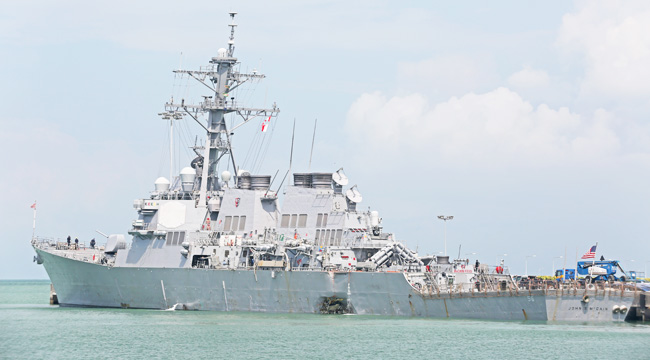
After the USS John S. McCain collided with an oil tanker near Singapore and left several sailors missing, the Navy relieved Seventh Fleet Commander Vice Admiral Joseph Aucoin from his duties and began an investigation into the entire Pacific Fleet — it was the second deadly collision of the summer — and ordered an operational pause in order to review training protocols.
The Navy has since called off its search at sea for the missing sailors after over 80 hours and will instead focus their search in the flooded areas of the ship. The Navy has also confirmed one death and the identities of the nine missing sailors. However additional remains have already been found:
The impact from the collision Monday tore a gash into the warship’s side and flooded sleeping berths and other areas. U.S. divers have been recovering remains on board.
Ships and aircraft from five countries had scoured 2,100 square miles of water near the collision without success. Malaysian search-and-rescue vessels discovered a body at sea on Tuesday, but the Navy determined it didn’t belong to one of the McCain’s crew members.
The nine crew members still missing were identified by the Navy as junior-ranking electronics and information systems technicians aged between 20 and 39.
According to the Wall Street Journal, the collision has renewed concerns that the Navy is overstretched in Asia and that crews and ships are harder to maintain when they are based in non-U.S. ports and are at sea for several more weeks at a time on average.
“Our mission ultimately is to decisively prevail in all contingencies from war to peace,” Adm. Scott Swift, the commander of U.S. Pacific Fleet, said in the statement. “We cannot complete this mission without first mastering — and continually remastering — the basics of our profession.”
(Via Wall Street Journal)
